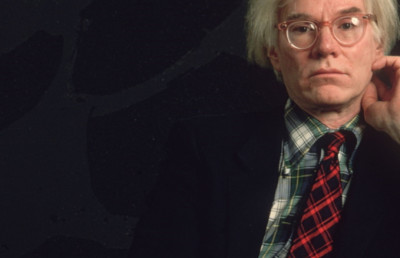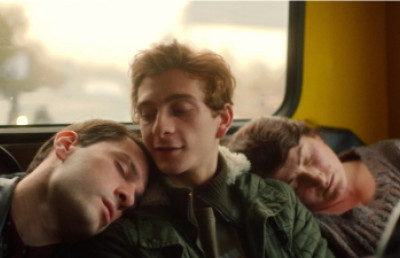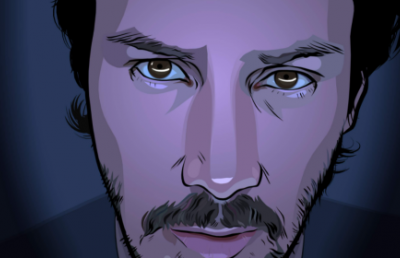The Cost of Transcendence: Painter-Filmmaker Julian Schnabel, Mark Rothko, and the Art Market
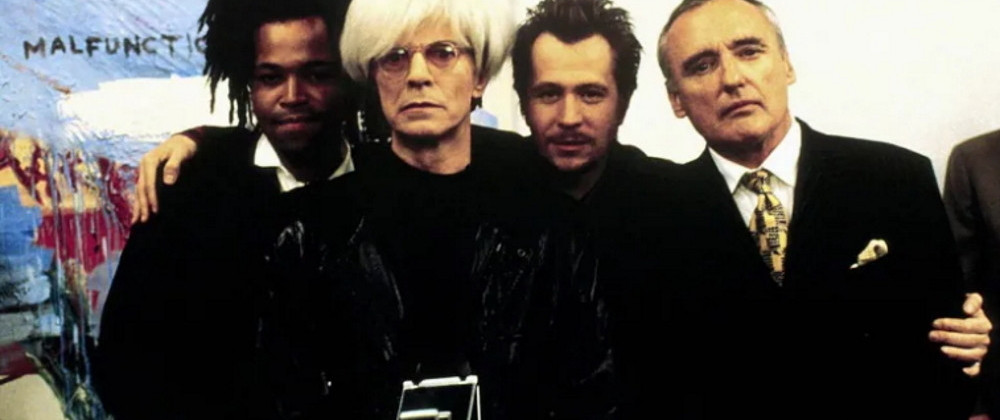
“Well, there is no separation between art and life. It is how it is. What you do every day makes you able to continue, and if you’re working and something happens and in the course of that, you feel better or more satisfied, you know what you need to do to achieve that sense,” painter and filmmaker Julian Schnabel told writer Gary M. Kramer in an interview for the online magazine Salon (“Julian Schnabel, a movie star at last,” May 5, 2017). The occasion was the public screening of a documentary, Julian Schnabel: A Private Portrait (2017), directed by Pappi Corsicato, featuring Schnabel, his children, and friends and peers such as Hector Babenco, Al Pacino, Willem Dafoe, Laurie Anderson, and Bono of U2. Julian Schnabel is fascinating for the range of his work—painting, photography, music, and film—and for his fierce championing of creativity, and the fact that he has achieved success in multiple fields. His films Basquiat, Before Night Falls, The Diving Bell and the Butterfly, Lou Reed’s Berlin, and Miral have won deserved attention, and a couple have been wildly celebrated, although both his painting work and film work have inspired controversy. Julian Schnabel’s ambition and passion have been on display and the subject of critique as much as his work: what he considers faith in art, others see as bravado.
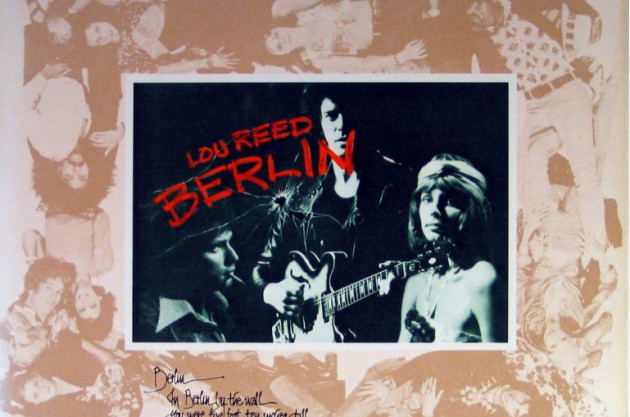
Julian Schnabel was a beloved child, a Jewish boy born in Brooklyn in 1951—despite the German-sounding name, for the longest time I had thought he was Italian (for his exuberance)—and his family moved to Texas when he was young; and Schnabel studied art and graduated from the University of Houston, before entering the Whitney Museum’s independent study program in New York, and traveling in Europe. Schnabel was influenced by American, Mexican, and European cultures, including religious iconography; and he wanted to move away from concept as the primary content of art, wanting art to express emotion. Schnabel was influenced by El Greco, Antoni Gaudi, Pablo Picasso, Joseph Beuys, and Cy Twombly. Schnabel’s paintings could be baroque, bulky, featuring diverse materials, such as ceramics, cardboard, tarp, and even antlers. His paintings were large. Julian Schnabel had important shows at the Mary Boone Gallery and the Pace Gallery that launched and propelled his career, making him with Jean-Michel Basquiat, Francesco Clemente, Eric Fischl, Barbara Kruger, Robert Mapplethorpe, David Salle, and Cindy Sherman one of the icons of the 1980s art world. Julian Schnabel has been brash, direct. honest, and he has had the courage of his convictions. His movement into film, for its artistic resources and power in society, might have been predicted.
Julian Schnabel has made films focused on very particular people, gifted and known, but Schnabel considers them portraits rather than biographical pictures. They are not whole life chronologies, but, rather, his motion pictures present views of individuals within their worlds, demonstrating aspects of personality and suggesting some of the philosophical, political, or personal problems, as well as possibilities, they faced at a certain time. Schnabel’s first film, focused on Jean-Michel Basquiat, the Haitian-American graffiti artist and painter, portrayed by the very talented Jeffrey Wright. I have been ambivalent about Basquiat as a painter, finding flashes of beauty in some of his work, and appreciating some of the historical, literary, and musical references, but I found much of it crude and ugly. I know others revered him. Jean-Michel Basquiat, famous when young in the early 1980s, had a very short life; and he was an acquaintance and peer of Schnabel, rather than an intimate friend; and some people—such as Jim Jarmusch, a friend of Basquiat—took issue with Schnabel for that reason. I suspect it was hard for Schnabel to resist a story that dealt with a milieu he was very familiar with. The film, which features David Bowie as Basquiat collaborator Andy Warhol and Michael Wincott as writer Rene Ricard, with Gary Oldman as the Schnabel figure Milo, could allow Schnabel a certain empathy and understanding, though some thought it inadequate. “Schnabel builds his characterizations of Basquiat through a cleverly conceived series of rumours, innuendoes, half-truths and sheer fabrication. But of these, it is Schnabel as the fictitious Albert Milo who is the greatest fraud: a creation so lacking in humility he becomes a sick joke,” wrote Okwui Enwezor (Frieze, January 2, 1997), condemning the film for its infantilizing portrait of the artist as a self-indulgent, sex-chasing junkie. Basquiat was known and respected for his creativity, not his personal life, but what is an interpreter to do with the fact that a very sexual artist’s drug use led to his (or her) early death? The Los Angeles Times reviewer Kenneth Turan said something similar: “Though as a writer-director, Schnabel’s work is not the total fiasco the debut films of fellow artists David Salle (Search and Destroy) and Robert Longo (Johnny Mnemonic) were, it is fascinating to see what a compendium of Troubled Genius movie clichés he has turned out. A paint-by-numbers version of an artist’s life, Basquiat is amusing for all the wrong reasons, especially at those horrible moments when you realize you’re supposed to be taking it seriously,” wrote Turan (August 9, 1996). However, the Chicago Reader’s Jonathan Rosenbaum thought there was not a boring shot in the film, and that the film was a creatively considered work in terms of editing and sound (September 26, 1996).
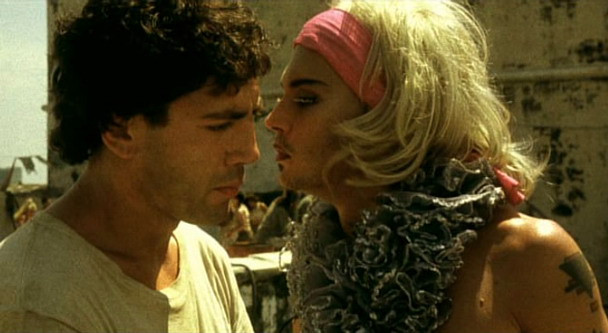
Before Night Falls, about the Cuban gay writer Reinaldo Arenas (Javier Bardem), created a lot of excitement in many cultural and film-going communities. It was easy to see Schnabel’s growth as filmmaker from Basquiat to Before Night Falls, as it is to see his growth from Before Night Falls to The Diving Bell and the Butterfly. Before Night Falls is a beautiful (engaging, sensitive) film that utilizes different tones, including the comic—and it captures how an event can be born of very different intentions (the policy of the United States welcomed Cuban exiles—and Fidel Castro allowed homosexuals to go as well as opened the doors of his prisons, allowing hardened criminals to go too). Noting actor Javier Bardem’s good reviews for his portrayal of Reinaldo Arenas, in the United Kingdom The Guardian’s reviewer Peter Bradshaw said, “But the film has curious flaws, notably a couple of bizarre vanity cameos from Sean Penn, as a Cuban mule driver, and Johnny Depp who—in the spirit of Ed Wood Jr.—plays two roles: a prison drag-queen and an army lieutenant. It’s also a curiously apolitical movie. Bafflingly, Arenas is never shown reflecting on the repressive nature of the Castro regime. One minute he is hanging on the words of a visiting Russian lecturer on collectivist economics, the next he is thrown in jail as a gay man” (June 14, 2001). Cultures contain contradictions—and so do revolutions. The film presents political events and ideas but it is not didactic; and certainly if a shrewd and talented man with a progressive vision is jailed for his sexual life, there are only so many things he is likely to think about that (and if he is, as here, compelled to emphasize his effeminacy as proof of his deviance so that he can leave the country, an absurdity, that is likely to deepen his disbelief). Julian Schnabel has expressive technique, and he trusts the film viewer to observe and understand what is on the screen.
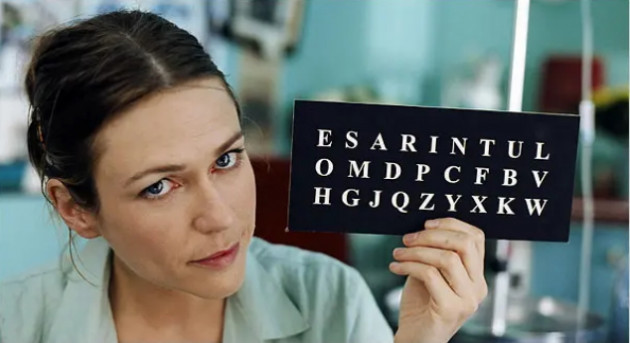
I liked Basquiat, Before Night Falls, and The Diving Bell and the Butterfly, thinking Diving Bell a very intelligent and interesting film about both love and language (inspired by the life of Jean-Dominique Bauby)—a man, an editor and writer, leaves his wife for another woman, but when he is ill it is the betrayed wife who is loyal, not the new lover; and the illness takes his language and mobility away from him but he learns to communicate by gesturing with his eyes toward alphabetical letters. I thought it a beautiful (gorgeous, intelligent, touching) film with a great subject—as did very many other people, so some of the dissents seem both noteworthy and peculiar. “The phrase ‘triumph of the human spirit’ hovers over The Diving Bell and the Butterfly, along with a swarm of other empty, uplifting clichés. But Mr. Schnabel and the screenwriter, Ronald Harwood, have other themes in mind. Limitation, constraint, incarceration,” declared the New York Times reviewer A.O. Scott, seeming to suggest wariness, before going on to say that Schnabel “demonstrates his own imaginative freedom in every frame and sequence, dispensing with narrative and expository conventions in favor of a wild, intuitive honesty” (November 30, 2007). Yet, Richard Schickel wrote in an article in Time magazine (also November 30, 2007), “As a moviegoer I’m less certain about the movie’s effectiveness. Schnabel has an alert, imaginative and unsentimental cinematic eye. He does everything he can to involve us in Jean-Do’s struggle against stasis…But still, somewhat shame-faced I have to admit that at some point in the film I began to hear a subversive voice whispering in my ear, and what it was saying was, ‘Could you blink a little faster, pal?’” Yet, even mixed or bad reviews in respectable, high profile publications might be preferred to obscurity. The career of Julian Schnabel, as painter and filmmaker, is very different from that of many, even most, artists.
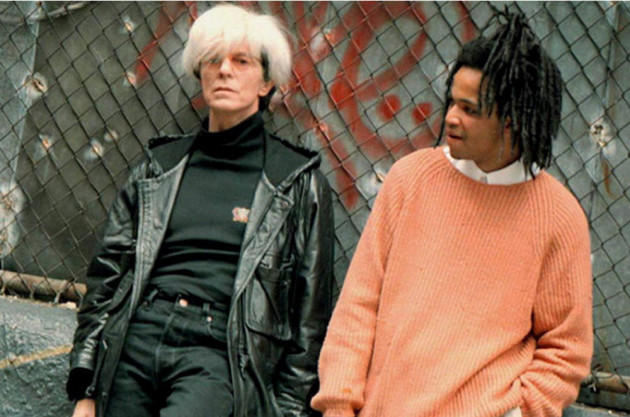
Part Two: Paul Cezanne and Vincent van Gogh
The history of art in Europe alone is one of overwhelming plenitude; the history of art in the world is great, contradictory, multifarious, profound, impossible for any one person to master. I like African masks, Assyrian stone slabs, Francis Bacon, Edward Bannister, Richmond Barthe, Caravaggio, Mary Cassatt, Chinese scroll paintings, Salvador Dali, Albrecht Durer, Lucian Freud, Artemisia Gentileschi, Giorgio de Chirico, Greek vases, Palmer Hayden, Frida Kahlo, Leonardo, Matisse, Berthe Morisot, Native American totems, Alice Neel, Rembrandt, Winold Reiss, John Singer Sargent, Rufino Tamayo, Henry Tanner, J.M.W. Turner, Paulo Uccello, and Andy Warhol. Paul Cezanne and Vincent van Gogh are two artists who suffered first neglect and then acclaim. There are probably a panoply of alternative canons that any reasonably well-educated person could identify. What determines which art and artists become known to the general public is often a confluence of money and power—in addition to whichever artists have proved themselves useful to other artists, and thus receive their repeated citations and recommendations. The painter Paul Cezanne (1839 – 1906), a committed, solitary worker, one who did many sittings for a still life or a portrait, was an artist who did not have the support of family or the cultural establishment; but, after an initial and long neglect, many artists of the nineteenth and twentieth-century found Cezanne inspiring. Paul Cezanne was an angry, melancholy man, often isolated, but devoted to nature and the mission of connecting art and life. Cezanne had been interested in the work of Tintoretto, Delacroix, Courbet, and the impressionist painters but he wanted to achieve something new—Cezanne dismissed some of the techniques that had been used to depict nature by others, such as outlines and precise contours and light distribution. The philosopher Maurice Merleau-Ponty has written about some of the ideas and issues embodied in Cezanne’s work, which was experimental, exploratory: “What we call his work was, for him, an attempt, an approach to painting” (“Cezanne’s Doubt” in Sense and Non-Sense, Northwestern University Press, 1992; page 9). Cezanne had moved away from imagined scenes to depictions of the perception of nature, wanting to illustrate how colors played with and against each other, how forms touched and dissolved into each other. “The meaning of his work cannot be determined from his life,” insisted Merleau-Ponty (“Cezanne’s Doubt” in Sense and Non-Sense; page 11). Cezanne’s life was circumstance and choice, and the tensions between them, a great part of his subject; but was important was less what he responded to than how he responded, particularly in his work.
Paul Cezanne was aware of technique and tradition, but he wanted to bring together the fragments of perception (much of his work seems multi-dimensional yet weighted); and while he has been criticized for abandoning thought and theory, the philosopher Maurice Merleau-Ponty has written that “Cezanne did not think he had to choose between feeling and thought, between order and chaos. He did not want to separate the stable things which we see and the shifting way in which they appear; he wanted to depict matter as it takes on form, the birth of order through spontaneous organization” (page 13). Cezanne seemed to want an art of restraint and suggestion as well as expression; and the idea was not to be imposed on the image, but come through it. “One can invest pleasurable objects by linking old ideas in a new way and by presenting forms that have been seen before. This way of painting or speaking at second hand is what is generally meant by culture,” summarized Merleau-Ponty (page 18). Paul Cezanne wanted originality. Attentive, curious, open, the artist, like the philosopher, like the writer, pursues freedom and knowledge and beauty, the evidence of which must be in the work. Maurice Merleau-Ponty writes that what an artist is, thinks, and does can be an embodiment of human possibility for all. ”It is not enough for a painter like Cezanne, an artist, or a philosopher, to create or express an idea; they must also awaken the experiences which will make their idea take root in the consciousness of others” (page 19). Paul Cezanne has done that, becoming accepted as one of the great artists of all time.
Vincent van Gogh (1853 – 1890), a man who lived a solitary and troubled life, has become a favorite of the cultural establishment and a favorite of the general public. He died poor and mad, but his paintings of bright, swirling colors, beautiful, intense, and strange, are visited in museums, and the subject of scholarly texts, and bring many millions of dollars at auction. Such a fact can be read as vindication—or a bitter joke, with the joke being on the artist. How possible is it to see the actual work beyond the surrounding myth and money? The doubts that haunted Paul Cezanne and Vincent van Gogh might have been assuaged by respect, support, and understanding. Vincent van Gogh was the restless, moody son of a Dutch pastor, and, after being an art gallery salesman at sixteen, he was a French tutor in London, a theology student, and, under the spell of his god, a religious evangelist to Belgian miners (he continued to preach without pay after being fired by the religious group that hired him). Vincent moved to Paris, where his brother Theo lived, and Vincent was influenced by the painters there, and more than a few were impressionists (Degas, Gaugin, Pissarro, Seurat, and Toulouse-Lautrec). Vincent had frustrated relations with women. His biography has become myth: he moved to Provence, where he painted the countryside, doing more expressive work; and Paul Gauguin visited him, but their time together was volatile. Many people think Vincent van Gogh threatened Gauguin with a razor before cutting off one of his own ears; but there have been claims that Gauguin cut off part of van Gogh’s ear during a fencing exercise. The disturbed van Gogh had medical attention, but that was of limited help; and he died of a gunshot wound, believed by most to have been suicide—and by a few to have been murder, possibly by a local antagonistic teen. Vincent van Gogh’s work and reputation were supported by his brother Theo’s widow and son (including through publication of Vincent’s letters); and about eleven years after the artist’s death, a Paris exhibition, followed by other shows, began to garner Vincent van Gogh serious respect. Is it possible now to see the work of the artist and discern his attention to the perceptible world, his sympathy for the suffering of others, or what he learned from Jean-Francois Millet or Camille Pissarro, and his admiration for Japanese art?
Vincent van Gogh has been the subject of several films: Lust for Life (1956), featuring Kirk Douglas as Vincent and James Donald as his brother Theo, directed by Vincent Minnelli and George Cukor; and Vincent and Theo (1990), starring Tim Roth as Vincent and Paul Rhys as Theo, directed by Robert Altman, and Van Gogh (1991) by Maurice Pialat with Jacques Dutronc as Vincent and Bernard Le Coq as Theo; as well Vincent (2004), a three-part whole life documentary by Waldemar Januszczak, and Paul Cox’s Vincent (1987), consisting of the artist’s work, shown while his letters are read by John Hurt. There have been many films about artists, some purely entertaining, some trashy, and some genuinely serious, imaginative and thoughtful. For the online site Taste of Cinema, Leo Greene, a young scholar of international film, produced an intelligent and interesting survey article on visual art in cinema—”The Best Movies on Art and Artists”—and it is a terrific resource (the article was dated April 22, 2015; and I saw it July 2017). Leo Greene included: Andrei Rublev (Andrei Tarkovsky, 1966); Sweet Troublemaker (Jacques Rivette, 1991); Crumb (Terry Zwigoff, 1994); Edvard Munch (Peter Watkins, 1974); The Color of Pomegranates (Sergei Parajanov, 1969); The Draughtsman Contract (Peter Greenaway, 1982); Hunger (Henning Carlsen, 1966), F for Fake (Orson Welles, 1973); The Horse’s Mouth (Ronald Neame, 1958); My Left Foot (Jim Sheridan, 1989); The Blood of a Poet (Jean Cocteau, 1930); An American in Paris (Vincente Minelli, 1951); The Hand (Jiri Trnka, 1965); Camera Buff (Krzysztof Kieslowski, 1979); Lust for Life (Minnelli and Cukor, 1956); Camille Claudel (Bruno Nuytten, 1988); All the Vermeers in New York (Jan Jost, 1990); Caravaggio (Derek Jarman, 1986); Frida (Julie Taymor, 2002); and The Agony and the Ecstasy (Carol Reed, 1965).
Part Three: The Silence of Mark Rothko
Accurate representation of the perceptible world may have been a long-held goal of many artists, but in country and culture in which materialism was nearly all, a world in which photography and cinema seemed to more easily accomplish documentation and representation, painting was free—or compelled—to identify new ambitions. Abstraction was one possibility. Mark Rothko was one abstract painter—but he wanted more than intellectual content. Mark Rothko (1903 – 1970), the son of a pharmacist, had been a gifted student interested in the arts, literature, drama, and music; and he studied at Yale and the Art Students League. A bookkeeper and a teacher inspired by the perception of children, and the lessons learned from artist friends, Mark Rothko had difficulty establishing himself as an artist—humor and faith helped sustain his spirit, but making a living suitable to the requirements of his first wife, a jewelry maker, was hard. It is always one thing for an artist to sacrifice or suffer—and another to ask sacrifice of others (ah, and yet we do). He would divorce and marry again. Mark Rothko experimented, trying surrealism, before finding his color rectangles, painting those in layers, until they radiated light and feeling: meditating on his work, one can feel the energy, but an impatient looker may find the work bland and boring. The Silence of Mark Rothko is a 2014 documentary film by Marjoleine Boonstra, narrated by Christopher Rothko, Mark Rothko’s son, his voice akin to a cello; and it informs the listener and viewer of the visual artist’s beginnings in Latvia—Mark Rothko’s early works were portraits and scenes, some resembling religious iconography, some akin to illustrations—and tells of his emigration to America, where he was isolated and poor as a young artist, looking for a nurturing silence, inspired by mythology, wanting painting to have the reach of music and poetry; and where, apparently despite his success, the painter did not feel entirely at home.
Yet, Mark Rothko was less interested in color and form, in abstraction, than in spiritual experience and emotion—and Franz Kaiser, a curator, speaks of emotion and understanding in reference to Rothko’s painting. Franz Kaiser says that some of Rothko’s work is too complex for communication—and yet declares that it contains a movement toward clarity, toward communication. The creative work the documentary presents might have benefitted from being labeled (titles, years when produced). Apparently, Rothko said that art contains various elements, specifying: death, sensuality, tension, irony, wit, chance, and hope. He compared small pictures to novels and large pictures to dramas. Anne Cohen-Solal, a French scholar (Mark Rothko: Toward the Light in the Chapel), says that Rothko used art as orientation for self and for the achievement of a social role for the artist. He wanted his work to be a complete experience, relative to daily life—and had a problematic response to art’s surrounding space (he returned a commission from a luxury restaurant). Carol Mancusi-Ungaro (Mark Rothko anthology) talks about how Rothko built up paint for effect; and how difficult restoring Rothko’s work is—requiring understanding, without easy reference to representation—and she thinks that for the Dominique and John de Menil chapel in Houston, referred to by many as the Rothko chapel, Mark Rothko’s painting demonstrated a new development, and was more elemental, and not despairing. Mark Rothko’s work has intellectual appeal and spiritual force—and, not having recalled if the fact was mentioned in the documentary, I was shocked to read a little more about Rothko and to see that he had committed suicide.
Part Four: The Art Market and The Next Big Thing
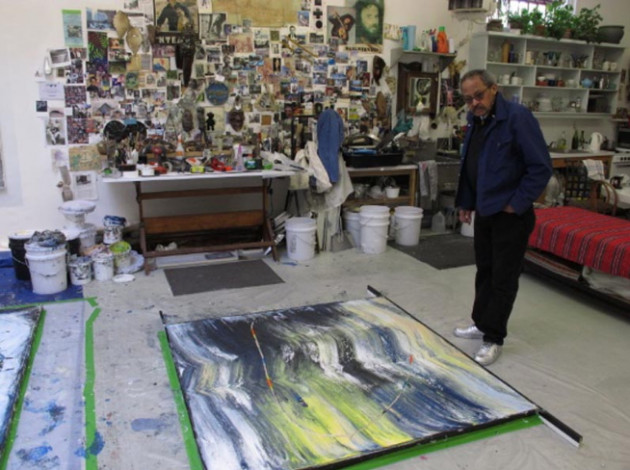
Mark Rothko, like many artists, preferred truth to taste. Julian Schnabel said that he wanted to create a picture that he had not seen before. What is the place of the artist in the art world? Is the artist a source of beauty, thought, truth? Is the artist a power? Or is the artist merely a worker, a creator of product? Paul Cezanne said that he was powerless, an admission that was used as proof that he did not believe in his work—although Cezanne was being literal: despite his craft and commitment, his work seemed to have no power, no impact, in the society in which he lived. Vincent van Gogh had passion for his art, but he died financially broke and spiritually broken; and his work since his death has made millions of dollars for others. The Next Big Thing, a 2014 documentary film by Frank van den Engel on the contemporary art market, confirms what we suspect: the carnivorous, commercial appetites of the art world. A collector talks about the aura and money value that dominates the art world—and an art marketer talks about that world as being concerned with the next big thing, of art as a financial investment—and notes that art has become a media subject, a source of celebrity. The artist Chuck Close talks about young artists entering the market too soon, noting that even student work is shown—and the importance of following one’s own passion and hoping for serendipity, knowing that it is impossible to plan for success, impossible to know exactly what the art world wants (if one tries to fit that taste, one ends up being a follower, not an originator). The painter Adrian Ghenie, who had the luck of being placed in a significant group exhibit and knows it, talks about the relation of colors, of paint to paint, but of how dull art-making can seem, and the impulse of marketing and positioning. The collector Michael Hort talks about doing research, meeting artists, and collecting and showing art in a prominent space. Rosa de la Cruz, another collector, talks about the need for research and thought, about organizing lecture programs and art tours for the young. The question: Is the taste of collectors serious taste, lasting taste—a precursor for posterity? An artist, Jack Whitten, an African-American, notes that creation of work is one thing, and business is another, and states that money is a necessity for an artist but not a priority—there are other reasons for being an artist; and he remarks ruefully about the market, and the vulnerability, the danger, of not having market support. Jack Whitten, who is not young, and is honest, careful, and amused, speaks of the relations among artist, critics, galleries, museums, and auction houses in a closely intertwined but unregulated market. A public auction can have a devastating effect if an artist does not have support, he repeats. A Zwirner Gallery partner talks about Jeff Koons’ work—and the excitement, look, and scale of his large white sculptures—and the preference for collectors who will give the work to museums. A Berlin art observer talks about art consultants who finance, hoard, and promote the work of particular artists—for their own gain. Art as investment inflates, and destabilizes, the market.
Conclusion
The art market rises and falls and rises again: the business of culture and the culture of business are intriguing subjects, but it is too easy to forget that art is something else—art is craft, perception, play, spirit, thought, and invention; passionate form and formal passion: art is revelation. Say the word artist and many of us think of people such as Leonardo, Rembrandt, and Picasso—and Picasso was a twentieth-century phenomenon, an art world in himself, working in a variety of forms and inspiring attention and interest almost everywhere. Picasso’s power was to make us look and look again, giving us new things to look at, new experiences. Julian Schnabel once had the testicular fortitude to suggest that he, Schnabel, was as close to Picasso as his time would come. Schnabel’s paintings and films have brought him fame and wealth—but he does not fulfill all our expectations or exhaust our attention. He does not shock us so that we stay shocked. He does not change us. Schnabel inspires interest and deserves respect, but he is not a Picasso. We await a new creative master—but whether that man or woman will be recognized by the established world of culture is another question entirely.
Article submitted July 2017


